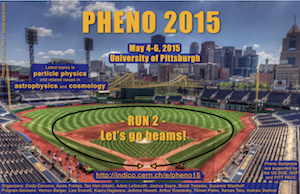Speaker
Andrew Spray
(CoEPP, University of Melbourne)
Description
Composite Higgs models can trivially satisfy precision-electroweak and flavour constraints by simply having a large spontaneous symmetry breaking scale, f > 10 TeV. This produces a 'split' spectrum, where the strong sector resonances have masses greater than 10 TeV and are separated from the pseudo Nambu-Goldstone bosons, which remain near the electroweak scale. Even though a tuning of order $10^{-4}$ is required to obtain the observed Higgs boson mass, the big hierarchy problem remains mostly solved. Intriguingly, models with a fully-composite right-handed top quark also exhibit improved gauge coupling unification. By restricting ourselves to models which preserve these features we find that the symmetry breaking scale cannot be arbitrarily raised, leading to an upper bound f < 100-1000 TeV. This implies that the resonances may be accessible at future colliders, or indirectly via rare-decay experiments. Dark matter is identified with a pseudo Nambu-Goldstone boson, and we show that the smallest coset space containing a stable, scalar singlet and an unbroken SU(5) symmetry is SU(7) / SU(6) x U(1). The colour-triplet pseudo Nambu-Goldstone boson also contained in this coset space is metastable due to a residual symmetry. It can decay via a displaced vertex when produced at colliders, leading to a distinctive signal of unnaturalness.
Author
Andrew Spray
(CoEPP, University of Melbourne)
